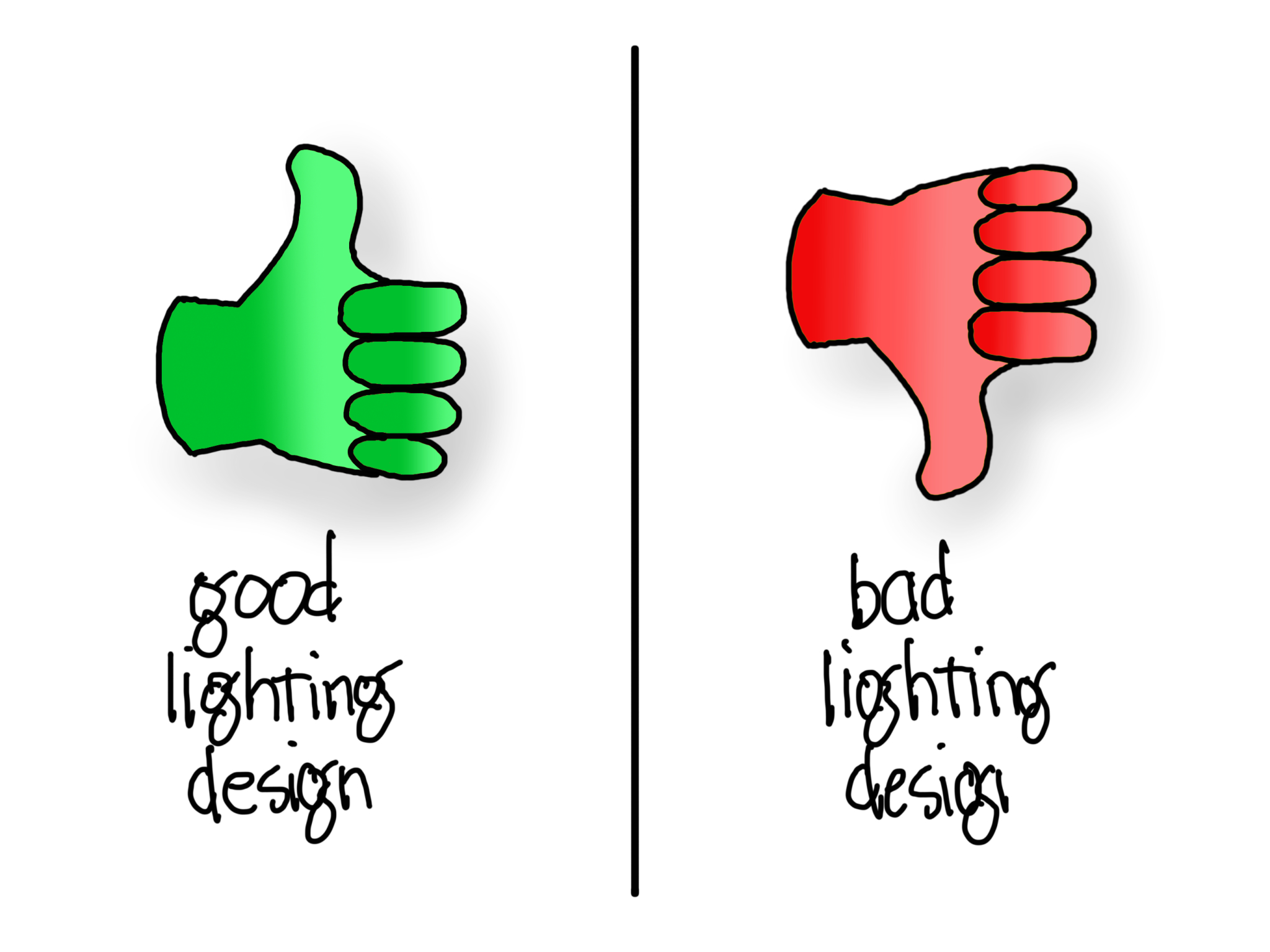Lighting designers are trained from birth…okay, that’s an exaggeration and a cliche, so this blog post is not off to the best start. Where was I? Ah yes, lighting designers are trained to know the difference between good lighting design and bad lighting design. This morning I pondered the possibility that this embedded understanding of right and wrong is the single greatest threat to helping people with light.
First, let’s understand what makes some lighting designs good and others bad.
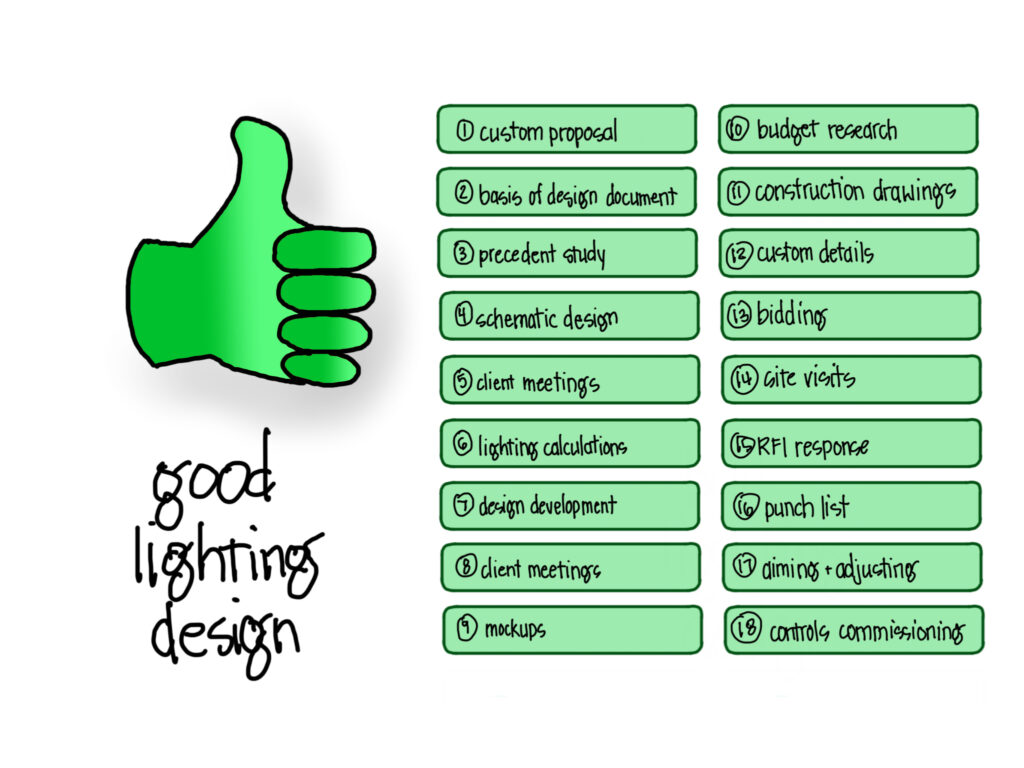
Good lighting design is first taught in schools and then reinforced when apprenticed to a successful lighting designer. It is a lengthy, involved process structured to deliver the best possible light for a client’s needs. Mirroring the architectural design process, good lighting design is tailored to each job from the very beginning with a custom proposal that takes time and effort to generate and negotiate.
Good lighting design might begin with a “basis of design” document that details applicable codes, IES illuminance recommendations, and other given factors any subsequent decision must address. Precedent study is a fancy way of saying “look at what other people did,” a research step to infuse a project with creativity. Schematic design and client meetings loop several times, gradually cementing the direction of the design.
Point-by-point detailed lighting calculations (called heat maps by some) will be performed at several points in the process to justify specific choices. Further design development will happen in additional meetings and presentations. Mockups will test installation and performance in real-world conditions.
Still with me? We’re about half way there.
Budget research is conducted throughout the process of good lighting design resulting in carefully prepared estimates to influence decisions. Fixtures will be counted and costed, and counted and costed again.
Construction drawings are meticulously crafted and include custom details and elevations to ensure that every light fixture is placed in just the right manner. The entire package is put out to bid, then revised as needed to fit into the client’s budget.
Good lighting design does not stop with delivery of documentation, or so the experts teach us. It continues throughout the entire construction process with numerous phone calls (answering RFI’s), site visits, and construction team meetings. Lighting designers walk through the project and develop a punch list of items yet to be finished, then walk through again and again until each item is checked off. Near the end, lighting designers carefully aim and adjust each lighting fixture for just the right effect and may meticulously program scenes and settings in control systems. We may even conduct post-occupancy-evaluations six months or a year later to see how the lighting design is performing (this may even be required by some energy codes and certifications).
There is nothing wrong with this process of “good” lighting design. I learned it twenty years ago on my first professional lighting design job, and I taught it to numerous students and interns and employees.
There is nothing wrong with this process of “good” lighting design. Except that it forces the vast majority of people on this planet to live with bad lighting.
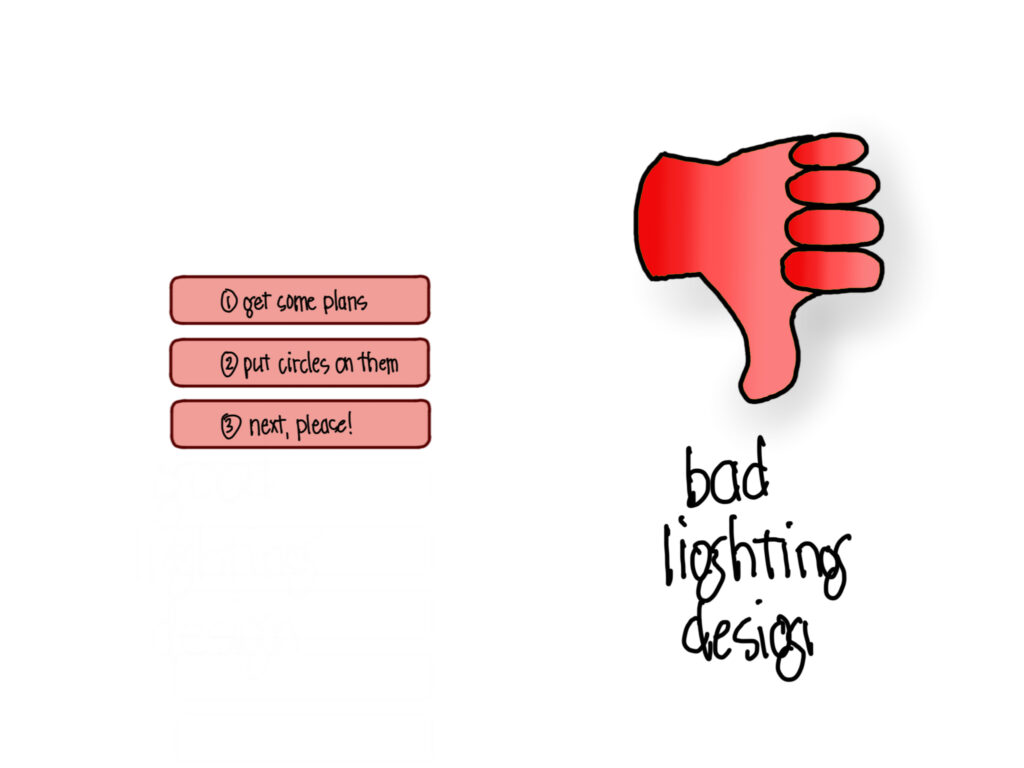
Bad lighting design is the alternative to good lighting design. The description of this kind of lighting can be very short indeed. For homes, it goes something like this:
Get the plans from the architect or builder or plan catalogue.
Put circles on the plan if they are not already there, preferably in rows and grids with even spacing.
Done.
This is not an exaggeration, it is what is done for virtually every home built in the United States. Circles on the plan are then translated by the electrical contractor into lights of some kind, either junction boxes for your decorative fixtures or disc lights or recessed lights. They choose whatever fixtures they used on the last job (so long as no one complained about them).
This entire blog is dedicated to eradicating this kind of lighting “design.” In fact, I don’t call it design at all. I call it lighting layout.
But this blog is not dedicated to “good” lighting design, at least how I defined it above. This blog – and my mission in life – is about something in between.
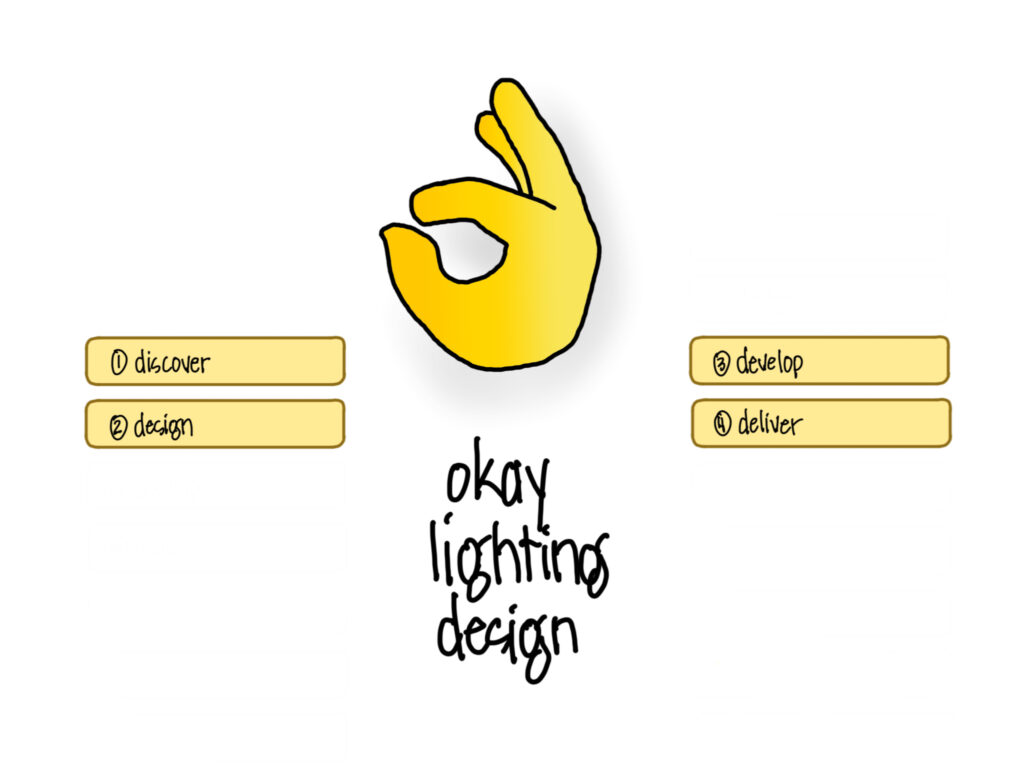
Let’s call this third way “okay” lighting design. Or perhaps “pretty good” lighting design, like the Pretty Good House movement.
This alternative is in constant tension between good and bad lighting design. This method seeks to deliver better lighting to more people and by definition must omit steps of “good” practice. This approach is something new, something without solid precedent, so our team is usually pulled in one way or the other.
When “okay” lighting design is pulled towards good, it gets better…and it gets more expensive and more time intensive. It becomes more exclusive, less affordable, clearly a luxury instead of a birthright.
When “okay” lighting design is pulled towards bad, it gets more affordable…and the benefits of light are reduced and diminished until unrecognizable.
Those of us in the middle walk a very tight rope indeed. We are stretched in both directions, prone to sway back and forth without a clear vision of what “okay” lighting design should be. My team at Light Can Help You tries every day to walk this line; 75% of our service levels attempt to walk this line.
As I wrestled with this difficult reality this morning I had a thought. Perhaps we need to change the labels I used above.
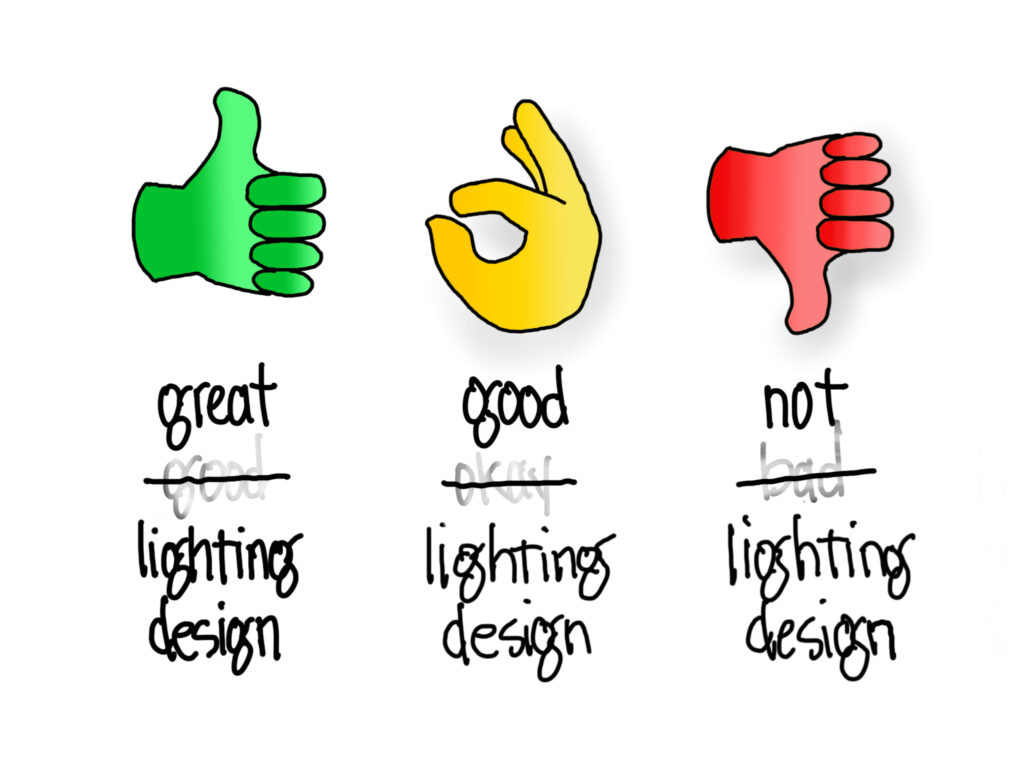
Perhaps we’re really talking about great lighting design, good lighting design, and not lighting design. This might sound better for marketing purposes – it can be hard to sell “okay” lighting design. So we talk up our services, we add to our offerings, we propose creative unique solutions…and we drift towards great lighting design, available only to a select few.
This menu – great, good, and not – might be appropriate for those with hundreds of thousands of dollars to spend on lighting. But for 99% of us, this menu is not a reality. I don’t even go into Bugatti showrooms; million-dollar cars do not even exist in my budget reality. So a Honda is not an okay car for me, it is a good car.
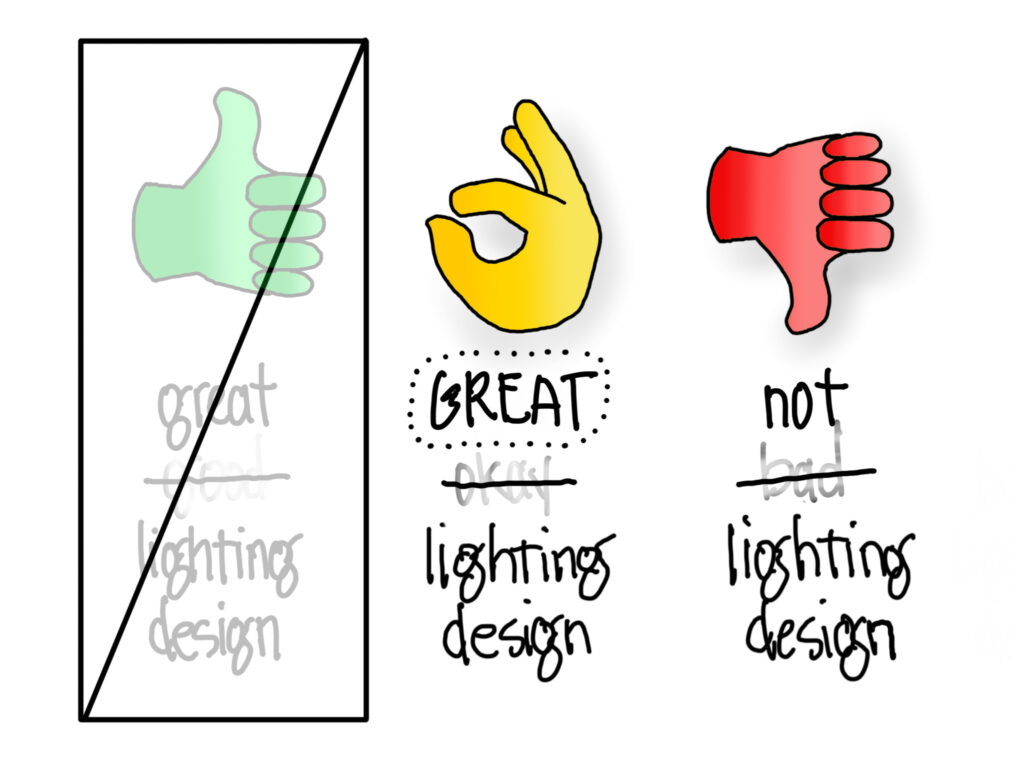
In fact, in most budgets, a Honda is a great car. In fact, in most budgets, okay lighting design is great lighting design.
I feel the constant pull towards “good” lighting design as defined at the top of this article, a process and product that is available to only the wealthiest among us.
I feel the constant pull towards the lower cost of “bad” lighting design, a process and product that is forced on everyone else.
I struggle constantly to achieve “okay” lighting design…and that may be the best lighting of all.
